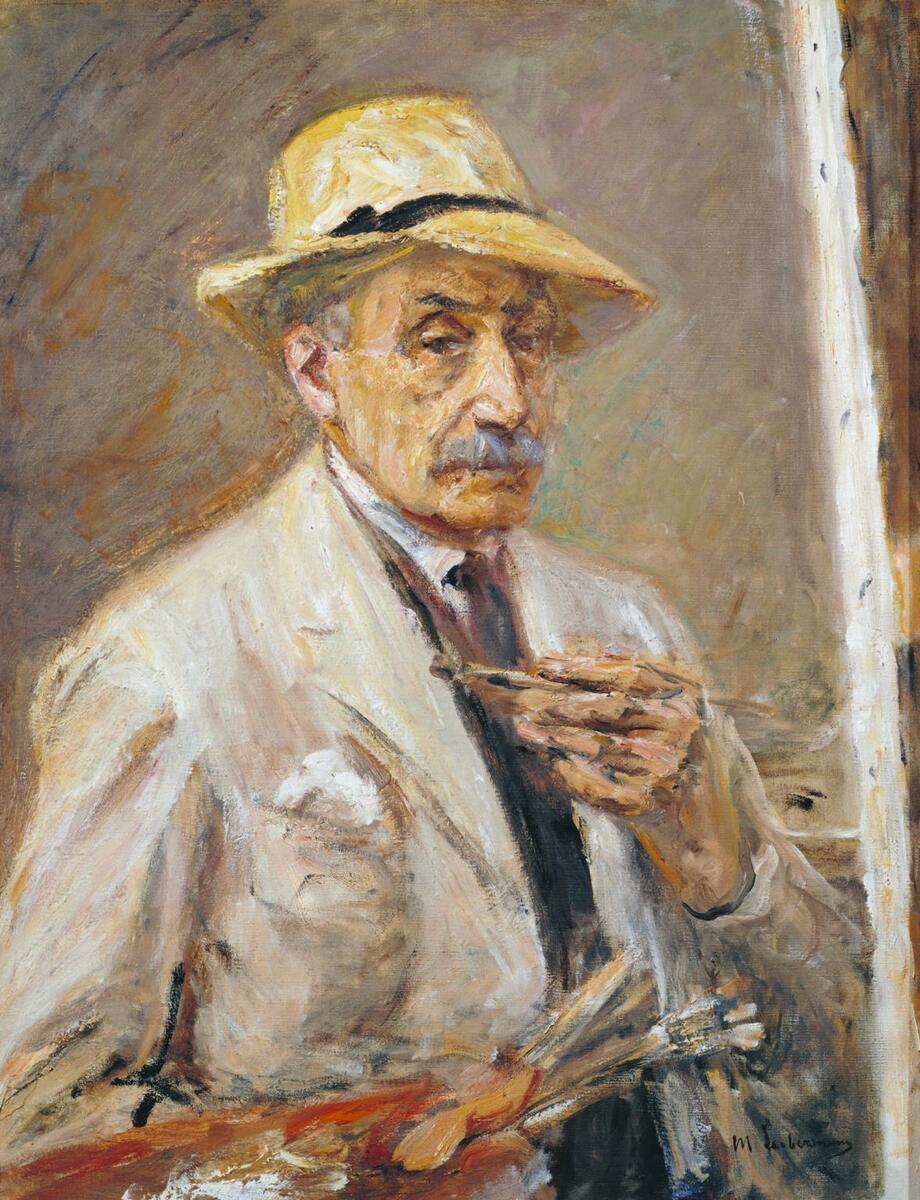Source

Source: Max Liebermann, Self-portrait, 1934. Oil on canvas. Tate Gallery, London, https://www.tate.org.uk/art/artworks/liebermann-self-portrait-n04779
Max Liebermann (1847–1935) was a German Jewish painter and a leading proponent of German Impressionism. Liebermann was particularly well known for his portraiture, and his subjects included Albert Einstein and Paul von Hindenburg. From 1910 onward, his work focused more on landscapes, as he painted the villas surrounding his home in the Berlin suburb of Wannsee. From 1899 until 1911, he sat at the helm of the Berlin Secession, Berlin’s premier avant-garde art association, which formed in 1898 as a direct alternative to the conservative Association of Berlin Artists. He was appointed head of the Prussian Academy of Arts in 1920 and remained in the position until 1933, at which point he resigned in response to the academy’s decision to no longer exhibit works by Jewish artists. Liebermann advocated for a clear and firm separation between art and politics, and earned the scorn of those who supported the new regime. He died in 1935 of old age, but despite his fame, his death was not reported in the German press.

Source: Max Liebermann, Self-portrait, 1934. Oil on canvas. Tate Gallery, London, https://www.tate.org.uk/art/artworks/liebermann-self-portrait-n04779